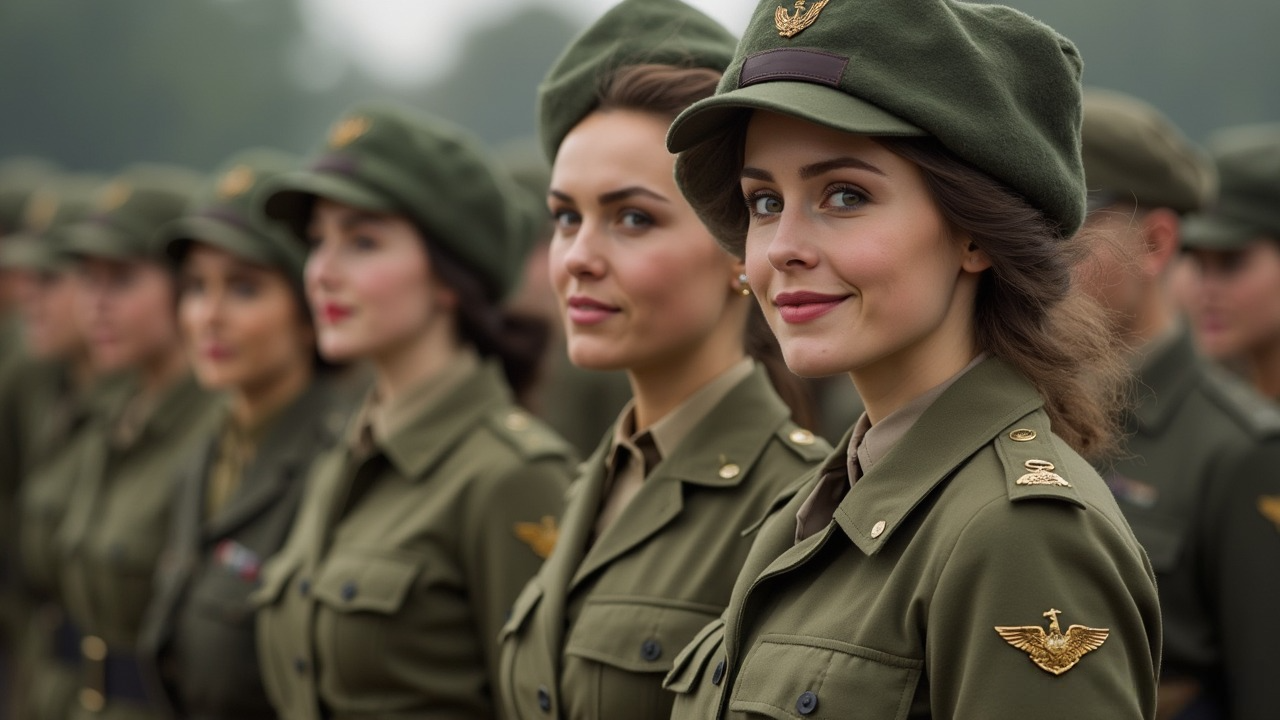
The Timeless Elegance of WW2 Women’s Military Uniforms
Published on Nov 30, 2024
World War II was a turning point in history that showcased the resilience and strength of women on an unprecedented scale. Women played vital roles across various military organizations, donning uniforms that symbolized courage and commitment. These uniforms, including WW2 women’s military uniforms, embodied a perfect blend of functionality and style, catering to the unique needs of women serving on the frontlines or in supporting roles.
Key Features of WW2 Women’s Military Uniforms
During World War II, women’s military uniforms were designed with practicality and professionalism in mind. They had distinct features that set them apart, reflecting the specific roles women took on during the war.
- Functional Design: The uniforms were tailored for comfort and efficiency, with simple cuts that allowed easy movement.
- Durable Fabrics: High-quality materials ensured longevity, even under challenging wartime conditions.
- Professional Appearance: Uniforms often included fitted jackets, skirts, and hats, maintaining a sense of dignity and respectability.
Let’s delve deeper into some iconic pieces like the British Auxiliary Territorial Service uniform, Women’s wartime service dress, and WAAF uniforms World War II.
The British Auxiliary Territorial Service (ATS) Uniform
The British Auxiliary Territorial Service (ATS) uniform is among the most recognizable military attire of World War II. Introduced in 1938, the ATS was Britain’s women’s army service branch, with members serving in various capacities such as clerks, drivers, mechanics, and radar operators.
Key Elements of the ATS Uniform:
- Khaki Tunic and Skirt: The uniform consisted of a smartly tailored khaki tunic paired with a matching skirt, embodying military precision and elegance.
- Beret or Cap: Headgear like a beret or cap was an essential part of the ensemble, emphasizing uniformity.
- Practical Accessories: ATS members often wore sturdy brown shoes and carried utility belts for added functionality.
Today, these uniforms are cherished by collectors and history enthusiasts for their historical significance and timeless appeal.
Women’s Wartime Service Dress: Beyond Fashion
The term women’s wartime service dress encompasses various uniforms worn by female personnel in the military, nursing, and voluntary services. These outfits were tailored to reflect the unique roles of women in wartime, blending formality with adaptability.
Notable Features:
- Variety in Design: Service dresses ranged from elegant nursing aprons to more robust military tunics.
- Symbolic Value: Each uniform element, from badges to buttons, carried symbols of rank and affiliation.
- Inspiration for Modern Designs: The sleek, minimalist cuts of these dresses have influenced contemporary military-inspired fashion.
WAAF Uniforms in World War II
The Women’s Auxiliary Air Force (WAAF) played a crucial role during WWII, with members working as radar operators, meteorologists, and aircraft mechanics. Their uniforms were distinctive and practical, reflecting their specialized duties.
Characteristics of WAAF Uniforms:
- Blue-Gray Fabric: Unlike the khaki tones of the ATS, WAAF uniforms featured a unique blue-gray shade, setting them apart.
- Functional Jackets and Skirts: Designed to accommodate the technical work of the WAAF, the uniforms were both comfortable and formal.
- Rank Badges: Shoulder insignias and badges were prominently displayed, signifying rank and expertise.
The WAAF uniforms symbolize the professionalism and dedication of women who served in the Royal Air Force during the war.
WWII Female Soldier Attire: A Mark of Progress
Although women were primarily involved in support roles during WWII, their uniforms were a testament to the evolving perception of women in the military. The WWII female soldier attire was functional yet dignified, emphasizing practicality without compromising femininity.
Key Highlights:
- Adaptation to Roles: Uniforms were modified based on the specific duties performed, ensuring comfort and efficiency.
- International Variations: From British ATS uniforms to American Women’s Army Corps (WAC) attire, each country had its distinct designs.
- Cultural Influence: These uniforms have become iconic representations of women’s contributions to the war effort.
Legacy of WWII Women’s Military Uniforms
The enduring appeal of WW2 women’s military uniforms lies in their ability to narrate the stories of bravery and resilience. These uniforms are more than mere garments; they are symbols of a transformative era when women redefined their roles in society and the military.
Why Collect and Preserve WWII Uniforms?
- Historical Significance: Owning a piece of wartime history offers a tangible connection to the past.
- Educational Value: These uniforms serve as tools to educate future generations about the pivotal role of women in WWII.
- Cultural Heritage: They represent a critical shift in societal norms and women’s empowerment.
Where to Find Authentic WWII Women’s Uniforms
If you are passionate about military history and collectibles, finding authentic replicas or original WW2 women’s military uniforms can be a rewarding experience. Platforms like Paddelaters offer a curated collection of British Auxiliary Territorial Service uniforms, Women’s wartime service dress, and WAAF uniforms World War II, making it easier to own a piece of history.
Conclusion
The story of WWII female soldier attire and other women’s military uniforms is one of empowerment and service. These outfits not only highlight the critical roles women played during the war but also continue to inspire admiration for their functionality and style. Whether you’re a collector, historian, or enthusiast, exploring these uniforms offers a unique glimpse into the past, celebrating the contributions of women who shaped the course of history.
